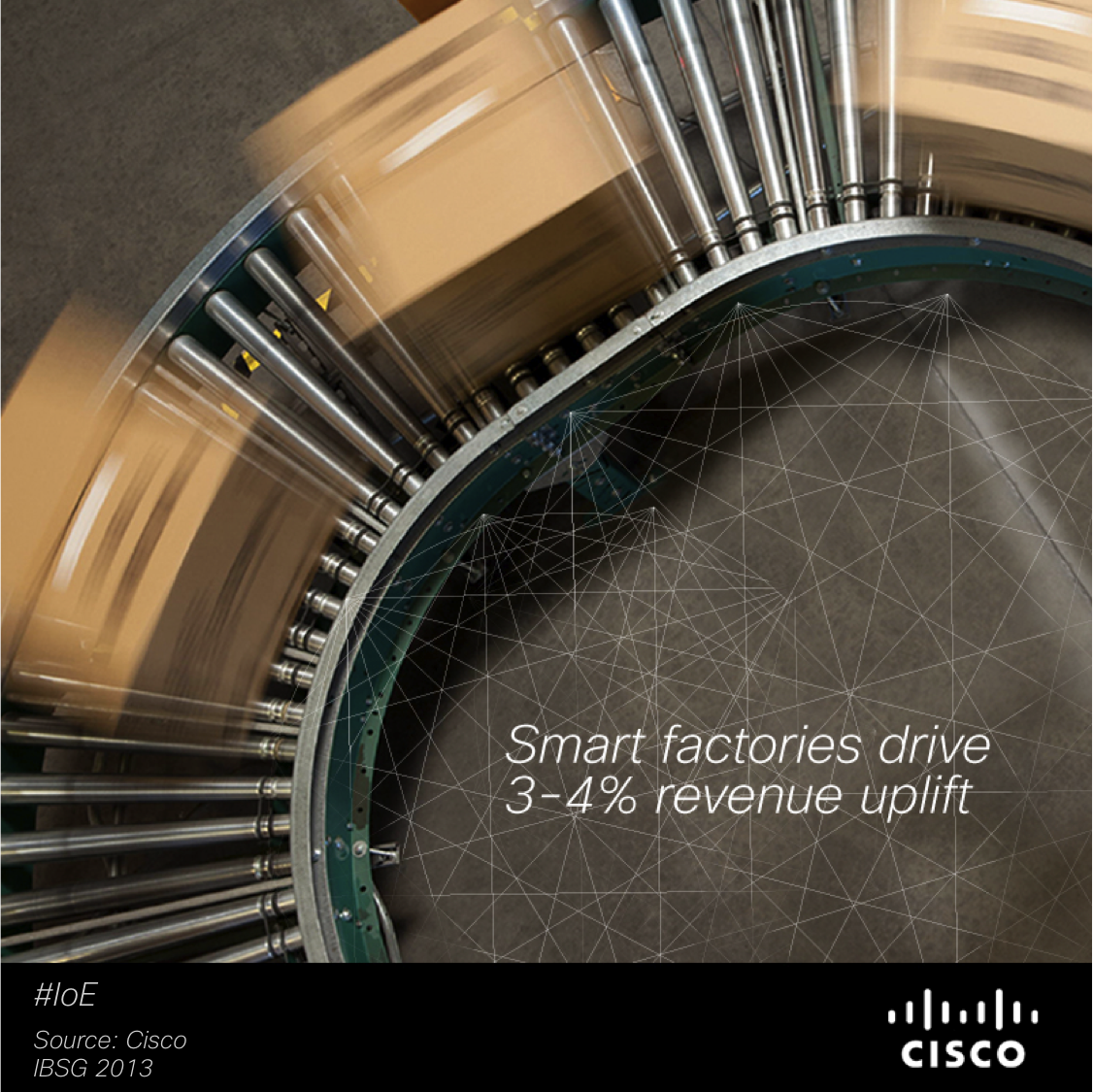If you were one of the more than 20,000 people who attended Cisco Live Orlando in person or one of the 250,000 who joined us online, you were able to see amazing examples of new ways the Internet of Everything (IoE) is connecting people, process, data, and things. People have asked me how long before they can see the value of IoE in action. Let me be clear: The Internet of Everything is not the Internet of tomorrow, it’s the Internet of today. Our most recent research shows that $1.2 trillion of value is “up for grabs” in calendar year 2013 alone.
If you are in an IT-intensive industry such as high tech, telecommunications, or financial services, your business is already seeing the value of using cutting-edge processes and technologies, thus realizing a high percentage of IoE value this year. The challenge is the high level of innovation needed to separate you from your competitors.

On the other hand, energy, manufacturing, and retail industries have strong “breakaway” potential by incorporating IoE into their products and operations today. Because these industries are asset-intensive, they can benefit significantly from M2M connections and can leapfrog rivals by integrating sensor-based technologies and analytics throughout the value chain. The true value of IoE is captured through the intersection of people, process, data, and things.
Smart factories use sensors and robots deployed on the assembly line to automate the manufacturing process and collect data that can be used for preventive maintenance, improve worker productivity, or analyze production issues. Technology infrastructure and tools are essential, but as noted in the IoE Value Index report, it’s the effective application of technology that will separate winners from losers in the IoE economy.
Let’s take a look at the manufacturing example. Applications to collect and analyze real-time data from the manufacturing floor need to be deployed on-demand in the managed data center because decisions are based on what’s happening on the factory floor, not on historical data. Operations personnel can use that data to drive improvements for the assembly process, such as identifying bottlenecks. Quality control can trace component failure to a subtle deviation in the servo response of a certain machine tool spindle. And industrial equipment manufacturers can connect to the equipment they installed on the shop floor to monitor, deploy a fix, or send a replacement part. Currently, the deployment of new applications is just not keeping up with the technological innovations (i.e. sensors) and user expectations.
To reduce time to market, we need to move from the laborious sequential process of procure, install, configure and test, compute, storage, network, and security to a much more streamlined and automated approach. The solution is to provision network services and security policy to support new sensors and digital signage on the manufacturing floor. This requires orchestration and integration across a variety of functions, technologies, and boundaries such as public, private, and partner clouds, for instance.
At Cisco, we believe companies will need to transition to a new IT model to fully capture the value of IoE. We call this model the Unified Framework. In this model for next-gen IT, we are unifying all the infrastructure elements so that the new applications can seamlessly request all the resources without worrying about the actual physical (or virtual) underlying technologies (compute, software, network, and security). Today, the slightest change on the assembly line to support a new model requires months of planning and implementation. What would it mean to a manufacturer if most of these changes could be implemented through a few clicks of the mouse? What if decision makers and supply chain partners could see the new data analytics in real-time?
Learn how your company can capture its share of $1.2 trillion of IoE value in 2013, and send me your thoughts via Twitter, @JimGrubb.
The technology of today can make a business about as cost efficient as ever. Being an entrepreneur has never been as cost efficient.
Todays technology make a cost efficient business a breeze. Being an entrepreneur and owning my own business is perfect for todays technology……